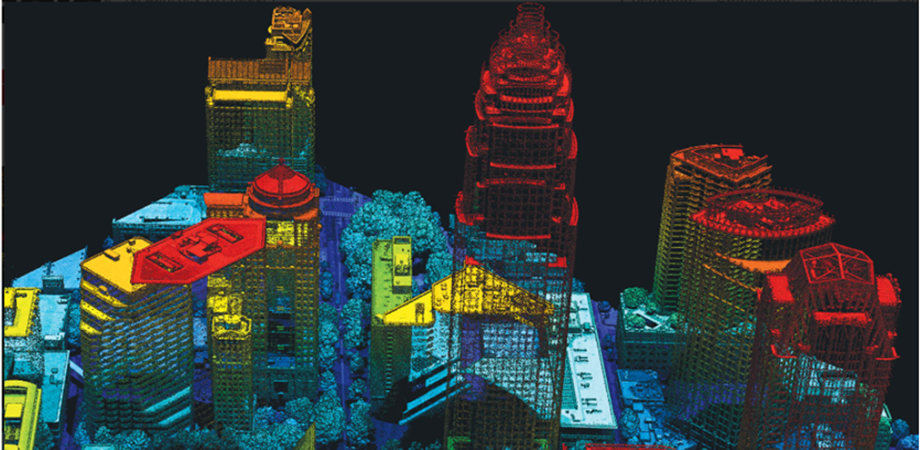
Laser radars have passed through many development stages.
01 April 2017 Paul McManamon
Laser radars have passed through many development stages since the first attempts in the 1960s to use lasers for ranging, which resulted in broad military applications for range finding and weapon guidance, especially laser designation, a form of bistatic laser radar.
Further studies of laser radar, often called ladar for laser detection and ranging, lidar for light detection and ranging, or opdar for optical detection and ranging, led to development of laser imaging systems based on 2D-gated viewing, and then 3D imaging, which is in the process of being fielded.
Comparing the achievements in laser radar technologies developed over the last 50 years shows the pervasive attraction of laser radar technology and its applications.
Imaging systems that use laser radar are under intensive development. These include those with higher range and cross-range resolution, single photon sensitive arrays, and multi-spectral or broad spectral emitting lasers for a variety of new capabilities like better weather penetration.
Other capabilities being developed for imaging systems include those that can look through vegetation and dense media, for target recognition and other applications.
3D map of downtown Charlotte, NC (USA), using a Geiger mode lidar. REMOTE SENSING AND MEDICAL USESOn the civilian and dual-use side, we find that environmental laser radars are well established in remote sensing research of the atmosphere and the ocean, while 3D-mapping laser radars have reached operational status with 3D mapping of large areas of many countries.
Lasers are increasing in efficiency and getting smaller and cheaper for use in cars or unmanned vehicles. The use of lasers in self-driving cars is likely to be the first widespread commercial application of laser radar. This will significantly decrease size, weight, and cost of laser radars. It also will enable widespread use of laser radars in unmanned aerial vehicles (UAVs) as they proliferate for multiple commercial and military applications.
In addition to self-driving cars and UAVs, laser radar is now emerging as an important technology for police to measure vehicle speed, and in video gaming, such as with Microsoft’s Kinect device.
Laser radar technology is also finding many applications in medicine. For example, optical low-coherence tomography originated from the lidar interferential reflectometry. It is extensively used in ophthalmology for eye investigation with 3D reconstruction of its structures and for 3D endoscopic studies of blood vessels, amplified with Doppler 3D velocimetry.
Another great example of a medical application for laser radar technology is the refraction mapping of the human eye, called aberrometry.
MULTIPLE FUTURE APPLICATIONS OF LASER RADAREmerging technologies and methods to be explored in laser radar systems of the future include multi-aperture and synthetic apertures, bistatic operation, multi-wavelength or broad spectral-emitting lasers, photon counting, advanced quantum techniques, combined passive and active systems, and combining microwave and laser radars.
We expect the use of coherent laser radar to increase as people find additional methods to utilize full-field data, including phase information.
On the component side, we foresee efficient, versatile laser sources; compact solid-state laser scanners for nonmechanical beam steering and beam forming; and sensitive and larger focal-plane arrays for both direct and coherent detection. These likely will be combined with efficient hardware and algorithms for processing of laser radar information and high data rates.
EDITOR’S NOTE:This is a concise summary of “Laser radar: historical prospective — from the East to the West,” an open-access article published in Optical Engineering in December 2016. SPIE Fellow Paul McManamon is a coauthor of the article.
LASER RADAR CONFERENCE AT SPIE DCS
Vasyl Molebny and SPIE Fellow Ove Steinvall, coauthors of “Laser radar: historical prospective — from the East to the West” in Optical Engineering, are members of the conference program committee.
McManamon is also coauthor of a paper on non-mechanical beam control for entry, descent, and landing laser radar to be presented at the conference 12 April.
–SPIE Fellow Paul McManamon is president of Exciting Technology, technical director of the Ladar and Optical Communications Institute (LOCI) at University of Dayton (USA), and a past SPIE president. Coauthors of the Optical Engineering article in a special section on electro-optical sensing are Molebny, Steinvall, Takao Kobayashi, and Weibiao Chen. The full open-access article is available in the SPIE Digital Library.